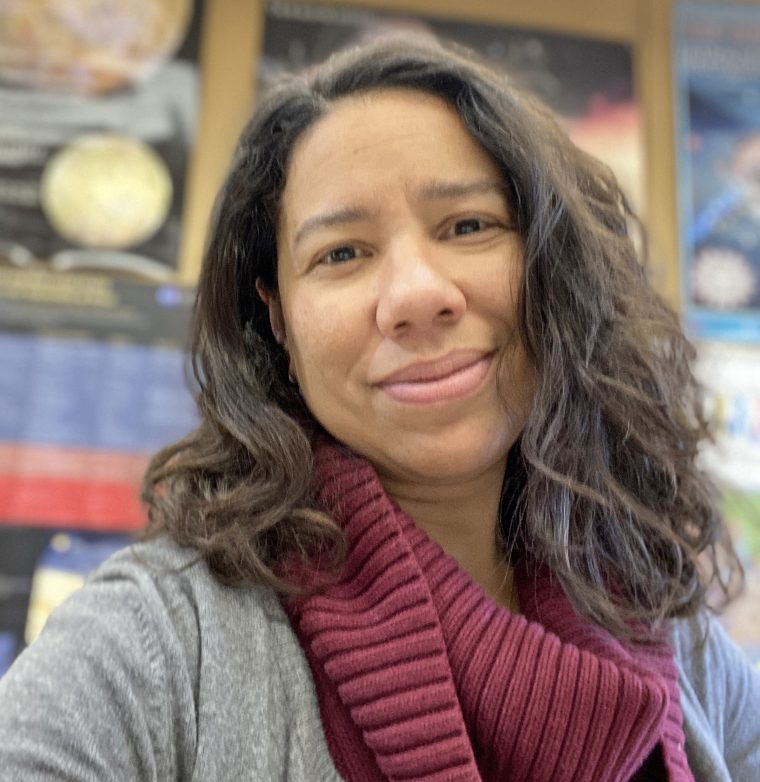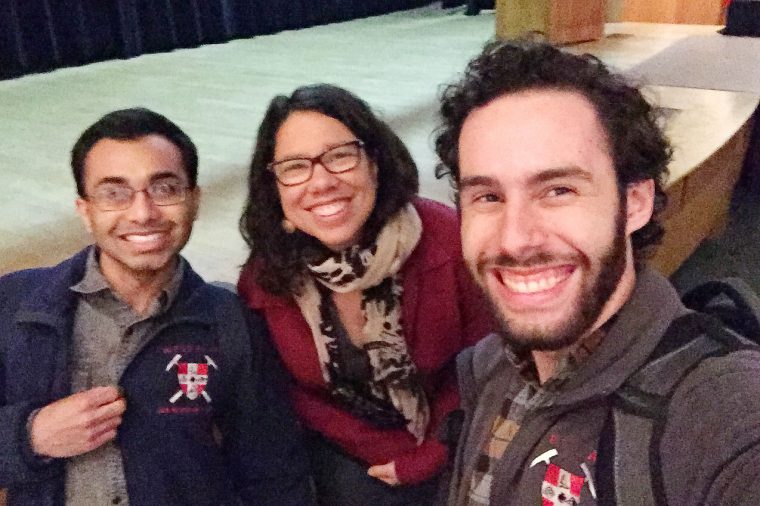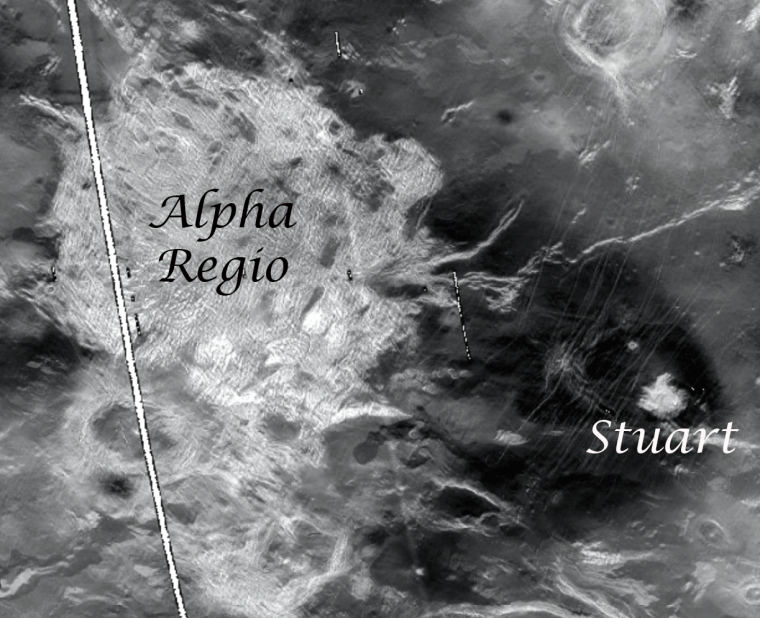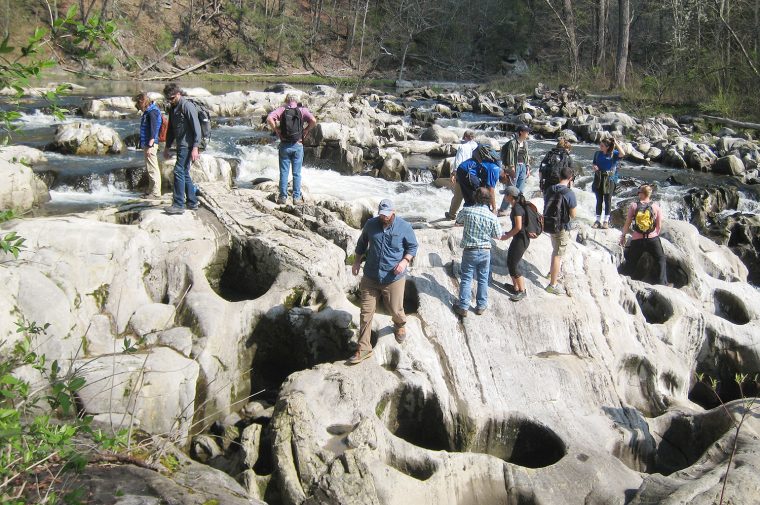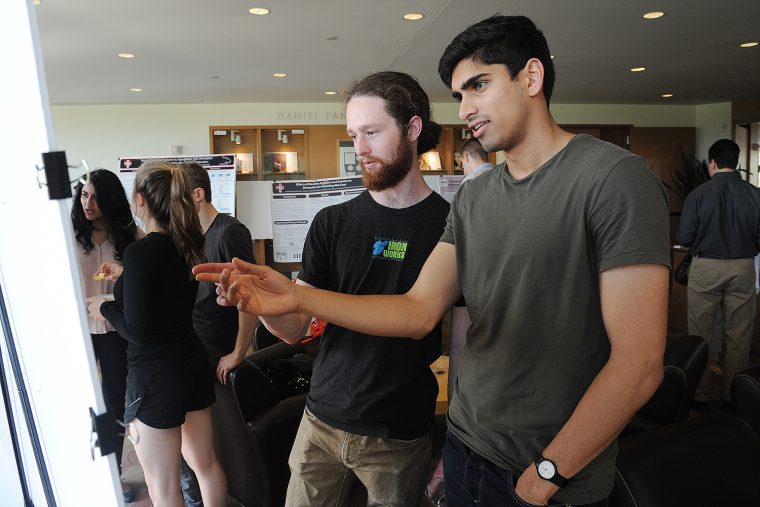For her exemplary contributions to research in the geological sciences and for being an instrumental mentor to young people of color, Professor Marty Gilmore received the 2020 Randolph W. “Bill” and Cecile T. Bromery Award from the Geological Society of America. Gilmore, George I. Seney Professor of Geology, professor of earth and environmental sciences, and co-coordinator of Wesleyan's Planetary Sciences program, was nominated for the award by Jim Head, the Louis and Elizabeth Scherck Distinguished Professor of Geological Sciences at Brown University. "Few individuals have done more for expanding diversity in the geosciences than Dr. Gilmore," Head said. She "leads…
Not one, but two spacecraft mission concepts co-developed by Martha Gilmore, George I. Seney Professor of Geology and professor of earth and environmental sciences, received second-round backing from NASA's Discovery Program on Feb. 13. Both concepts—which were awarded $3 million each—would assess whether Venus was ever a habitable planet by examining its landscape, rocks, and atmosphere. NASA's Discovery Program, now in its ninth year, funds investigations to develop concept studies for new missions. Although they’re not official missions yet, the selections focus on compelling targets and science that are not covered by NASA’s active missions or recent selections. Gilmore's projects…
In this recurring feature in The Wesleyan Connection, we highlight some of the latest news stories about Wesleyan and our alumni. Wesleyan in the News 1. The Washington Post: "How One College Is Helping Students Get Engaged in Elections—and, No, It’s Not Political" President Michael Roth writes about Wesleyan's initiative to engage students meaningfully in work in the public sphere ahead of the 2020 elections, and calls on other colleges and universities to do the same. He writes: "Now is the time for higher education leaders to commit their institutions to find their own paths for promoting student involvement in the…
Martha "Marty" Gilmore, George I. Seney Professor of Geology, professor of earth and environmental sciences, is the author of a research article titled "Present-day volcanism on Venus as evidenced from weathering rates of olivine," published in Science Advances Vol. 6 on Jan. 3, 2020. According to the paper's abstract: At least some of Venus’ lava flows are thought to be <2.5 million years old based on visible to near-infrared (VNIR) emissivity measured by the Venus Express spacecraft. However, the exact ages of these flows are poorly constrained because the rate at which olivine alters at Venus surface conditions, and how that…
Martha Gilmore, the George I. Seney Professor of Geology, professor of earth and environmental sciences, believes we have a lot to learn from studying Venus—yet the United States has not sent a mission to the Earth-sized planet since the early 1990s. That’s why Gilmore has proposed a major flagship mission concept study to assess whether Venus was ever a habitable planet by looking at its rocks and atmosphere. In October, NASA agreed to fund the planetary mission concept on Venus submitted by Gilmore, a planetary geologist, and colleagues at several other institutions, who come from varied disciplines. Gilmore, who is…
Martha "Marty" Gilmore, the George I. Seney Professor of Geology and professor of earth and environmental sciences, presented a talk at the American Museum of Natural History on Feb. 4 titled "Venus: One Fate of a Habitable Planet." Gilmore's presentation was part of the museum's Frontiers Lecture Series, which highlights the latest advances in our knowledge of the universe by presenting the work of scientists at the cutting edge of astrophysics. Gilmore, a planetary geologist, uses surface mapping and orbital spectroscopy to study Venus's terrain. During her talk, she spoke about the planet's oldest rocks and what they can tell us about the…
Like planet Earth, the geology of Venus is diverse; consisting of areas of flat plains and deformed, mountain-like terrains called tesserae. And like Earth, Mars, and the Moon, Venus is checkered with hundreds of craters. “What's odd about Venus's craters, is that craters we do see are relatively young, indicating the surface of Venus has been covered by planet-wide volcanic flows," says Martha "Marty" Gilmore, George I. Seney Professor of Geology, professor of earth and environmental sciences. “The tesserae are the only terrains older than these volcanic flows and thus our only hope at accessing rocks from the first billion…
Suzanne O'Connell, professor of earth and environmental sciences, was named a Councilor of the Geological Society of America for the GSA's governing board. O'Connell will hold this position July 2017 through June 2021 along with two other faculty from the University of Rochester and California State University. "GSA members have again elected thoughtful and innovative individuals to lead the organization and further the impact of geoscience," said GSA Executive Director Vicki McConnell. "I am excited to work with the new Officers and Councilors as they join the GSA leadership team." In addition, Marty Gilmore, the George I. Seney Professor of Geology, professor of earth and environmental…
From April 27-30 the Department of Earth and Environmental Sciences hosted the 30th Annual Keck Geology Consortium Symposium at Wesleyan. The event involved several field trips to local sites of geographic significance and concluded with presentations at Exley Science Center from those who attended the field trips. The first trip was led by Paul Olsen, the Arthur D. Storke Memorial Professor of Earth and Environmental Sciences at Columbia University. This excursion examined the Connecticut River Valley Basin for remaining traces of the mass extinction that preceded the rise of the dinosaurs 202 million years ago. "The Connecticut River Valley Basin is one…
Hundreds of Wesleyan students had the opportunity to present their academic research at various poster sessions in March and April. Posters often contain text, graphics and images that illustrate the students' research results on a single board. Poster session attendees can view the posters and interact with the author. This year, the Psychology Department, College of the Environment, Biology Department, Neuroscience and Behavior Program, Natural Sciences and Mathematics Division, Quantitative Analysis Center and the Department of Earth and Environmental Sciences hosted poster sessions. Photos of the poster sessions are below: (Photos by Olivia Drake, Caroline Kravitz '19 and Rebecca Goldfarb Terry '19) (more…)
Based on the senior thesis of Jared Lefkowitz ’12, “A Tale of Two Lakes: The Newberry Volcano Twin Crater Lakes, Oregon, USA,” was published online, Nov. 25, by the Geological Society of London, U.K, as part of the volume, Geochemistry and Geophysics of Active Volcanic Lakes. The study is co-authored by Lefkowitz; Ellen Thomas, research professor in earth and environmental science; and Johan Varekamp, the Harold T. Stearns Professor in Earth Science. Varekamp also is professor of environmental science, adjunct professor in Latin American studies, and chair of the Geological Society of America's Limnogeology Division. Thomas also is the University Professor in…
On Nov. 18, the Department of Earth and Environmental Sciences (E&ES) hosted the 8th Annual Meeting of the Geological Society of Connecticut (GSC). The event featured a student scholarship wine-tasting fundraiser and a public science lecture called “The Real Jurassic Park in the Connecticut Valley,” by paleontologist Robbert Baker. During the meeting, Phillip Resor, associate professor of earth and environmental sciences, Martha “Marty” Gilmore, the George I. Seney Professor of Geology, were awarded the Joe Webb Peoples Award for their efforts in hosting the 2015 New England Intercollegiate Geologic Conference. The award recognizes those who have contributed to the understanding…


